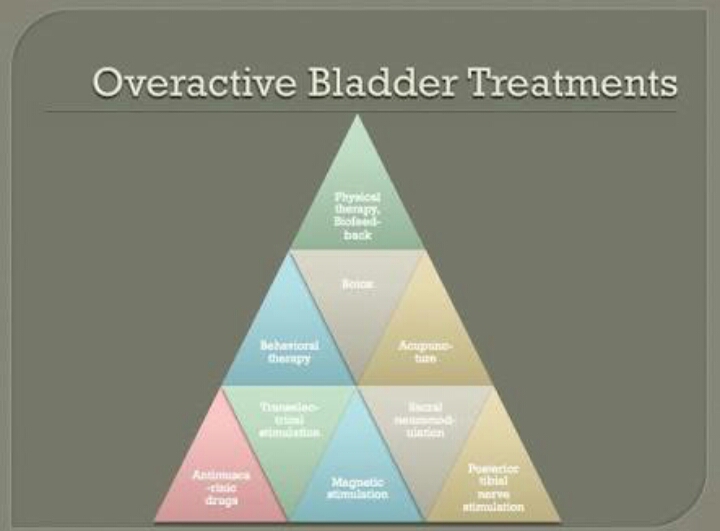Lifestyle modifications:
Lifestyle modification includes a variety of behavioral changes that can reduce and even eliminate Overactive bladder symptoms. Most of these modifications are based on expert opinion with limited scientific evidence due to lack of trials. However, the benefit of a healthier lifestyle and the fact that these interventions often have little to no risk of adverse events favor the continued use of behavioral modification as an initial and ongoing therapy for OAB. Importantly, the foundation to achieving a successful behavioral change is patients’ education and investment in their own health. Thus, it is essential to have a discussion with your patients, educate them about these potential interventions, assess what they think are feasible options, and encourage them to initiate a change.
An initial option for leakage control for patients with OAB is the use of absorbent products to help control symptoms. Studies have shown that in women with milder symptoms, disposable insert pads are preferred, while in women with more severe leakage, disposable pull-ups are the best overall option.
Common lifestyle modifications include
- reducing fluid intake,
- avoiding bladder irritants,
- limiting intake of caffeine and other bladder irritants, avoiding constipation,
- optimizing overall health,
- and smoking cessation.
- Diet and fluid management is a common behavioral intervention that patients can institute at home independently or with the aid of a health care provider or nutritionist. There is also some evidence that weight loss in overweight women may reduce urinary incontinence symptoms and benefit overall health.Providers should educate patients on potential lifestyle changes such as weight loss, smoking cessation, and fluid intake adjustments that can lead to a significant impact in symptom control.
Diet and fluid management options;
- Decrease fluid intake to six to eight glasses of water per day and avoid fluid intake for the 2–3 hours prior to bedtime to reduce urine production overnight.
- Reduce intake of bladder irritants such as caffeine, carbonated beverages, spicy food, artificial sweeteners, and alcohol.
- Avoid constipation by initiating a bowel regimen to achieve soft stools every 1–2 days, using fiber supplements, stool softeners, and/or laxatives and establishing a routine defecation schedule.
- Smoking cessation
- Optimize overall health by improved control of hypertension, diabetes, sleep apnea, and other chronic health conditions to reduce urine production and improve bladder neurological function.
Medical treatment:
The mainstay of treatment for OAB is medical therapy, often coupled with behavioral and dietary modifications. Medication is considered second-line therapy for OAB.
The primary class of pharmaceutical agents used to treat OAB is a subtype of anticholinergics known as antimuscarinics
There are six antimuscarinic agents available for the treatment of OAB worldwide:
- oxybutynin,
- tolterodine,
- fesoterodine,
- trospium,
- darifenacin,
- and solifenacin.
Side effects of antimuscarinic receptors:Because muscarinic receptors are found throughout the body, the side effects of these agents are not only common but also widespread.
The most commonly seen adverse effects due to antimuscarinic activity in other organ systems include
- dry mouth (salivary glands),
- dry eyes (cilia and iris),
- constipation (intestinal smooth muscle),
- heart palpitations (AV node),
- and cognitive impairment (forebrain).
Each of these organ systems contains varying levels of all five muscarinic receptor subtypes. Newer antimuscarinic agents have been developed to target the bladder more specifically by selectively focusing on M2 and M3 receptors, which are both found in the detrusor muscle of the bladder wall. Although M2 receptors are predominant, M3 receptor is thought to play the most active role in detrusor muscle hyperreflexia. However, these agents have also demonstrated adverse effects in the body systems highlighted above, due to the fact that the M3 receptor is not unique to the bladder. The M1 receptor’s effect on cognitive impairment is thought to be due to its role in learning and memory.Cognitive effects that have been reported with antimuscarinic agents include changes in memory, blurred vision, somnolence, hallucinations, confusion, and delirium, all of which are more prevalent in the elderly population. Special consideration must be taken when prescribing antimuscarinic medications in this population.
🔥29 Views





